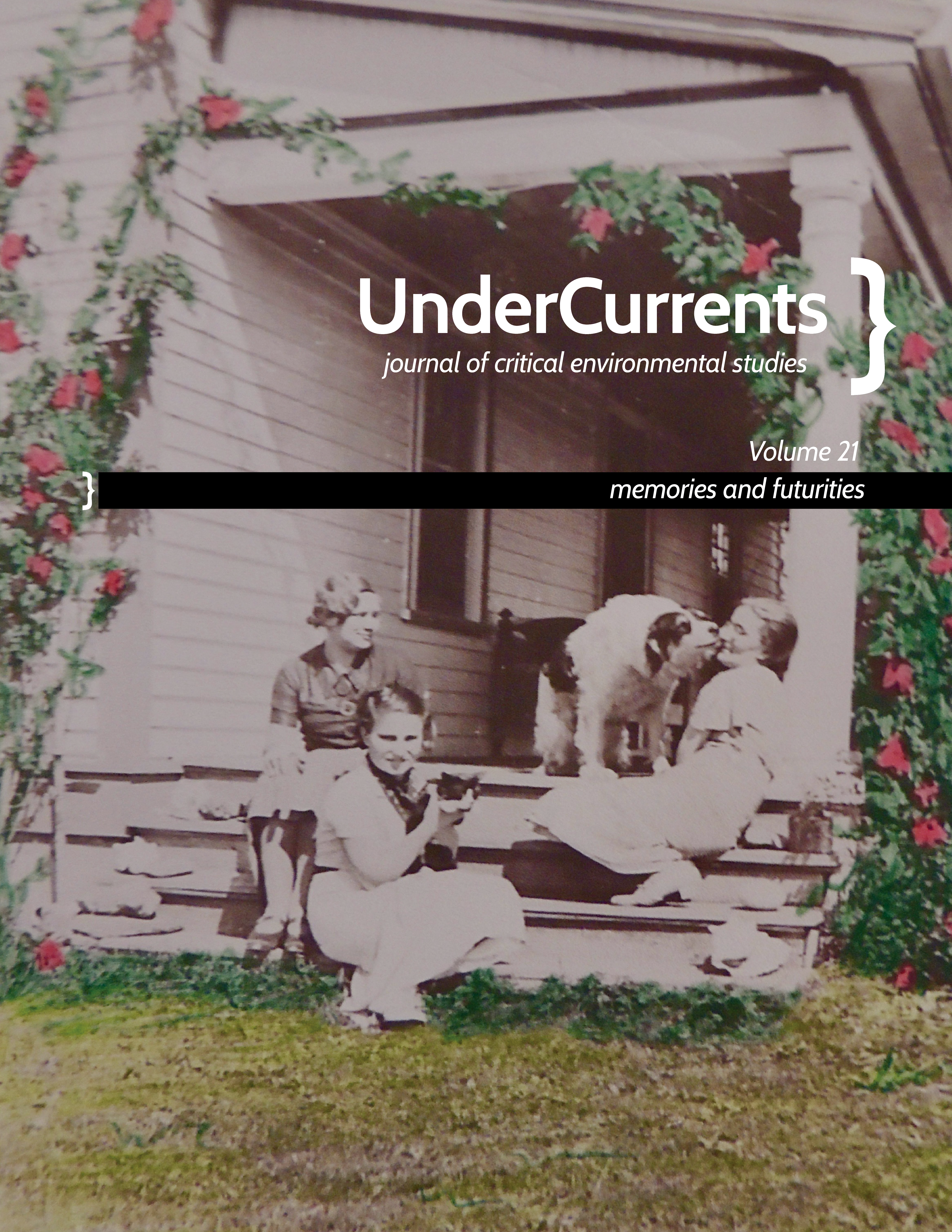Vascular Memory
DOI:
https://doi.org/10.25071/2292-4736/40324Keywords:
Arts-based Research CreationAbstract
These images are part of a larger project that explores multispecies relations in city space; how we humans can, and do, and must practice shifting our attention in acknowledgment of the others with whom we share land and our homes. For me, this shift in attention necessitates a kind of deeply reflective practice—deliberate and performative at first, but soon an embodied memory.
Using macro photography, these pieces reflect one way of attending to a different scale and tempo of multispecies life. Here, I attune visually to the Catalpa leaf: a non-native tree transplanted to Toronto, for ornamental purposes. Importantly, attuning to the Catalpa leaf also shifts my conception of time and futurity. The present future is no longer solely anthropocentric but, rather, planthropocentric as well.
We hold stories and memories in the tissues of our bodies, and these fleshy materials that compose us also create the patterns of our sensing and doing. Our tissues are sources of knowledge and of retention, and how they re-act tends to inform how we are able to relate. I believe this to be true of human-animals, and I believe it to be true of plants. If our bodies are capable of carrying so much experience and expression, what then might other multispecies bodies be capable of holding onto? What patterns or stories might other tissues retain or carry into the composition of the future?
References
Gagliano, Monica, et al. “Plants learn and remember: lets get used to it.” Oecologia, vol. 186, no. 1, 2018, pp. 29–31. DOI: https://doi.org/10.1007/s00442-017-4029-7
Myers, Natasha. “How to grow livable worlds: Ten not-so-easy steps.” The World to Come, edited by Kerry Oliver Smith, Harn Museum of Art, 2018, pp. 53–63.
Downloads
Published
How to Cite
Issue
Section
License
Copyright (c) 2022 UnderCurrents: Journal of Critical Environmental Studies

This work is licensed under a Creative Commons Attribution 4.0 International License.
Creators retain copyright for all writings and artwork published in UnderCurrents. New material published as of Volume 21 (2022) is available under a Creative Commons Attribution 4.0 International License (CC-BY 4.0).


